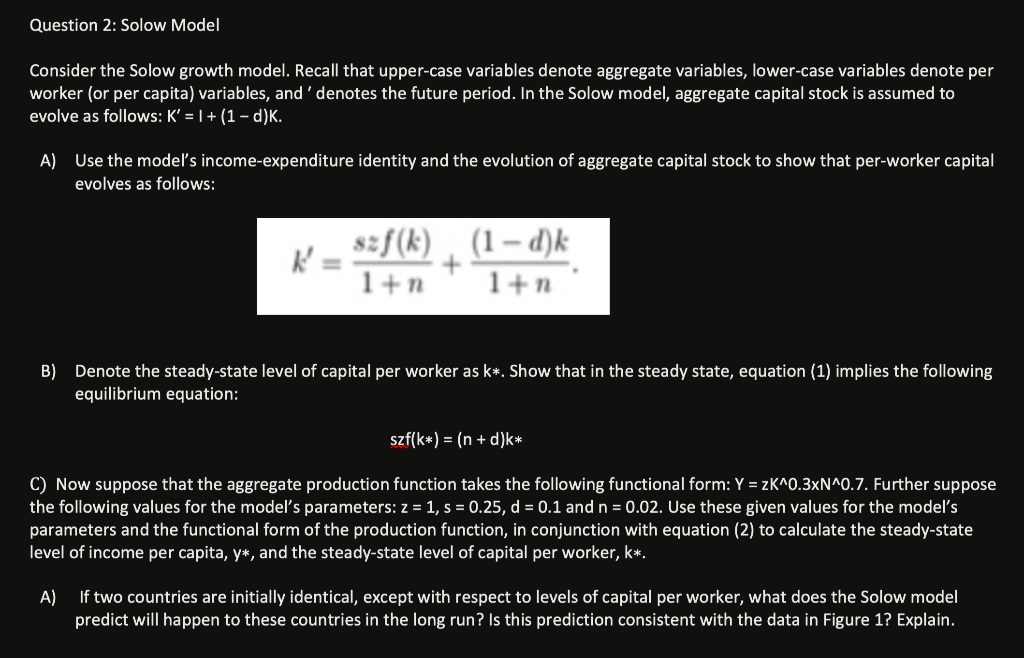
Consider the Solow growth model. Recall that upper-case variables denote aggregate variables, lower-case variables denote per worker (or per capita) variables, and ' denotes the future period. In the Solow model, aggregate capital stock is assumed to evolve as follows: K=I+(1d)K A) Use the model's income-expenditure identity and the evolution of aggregate capital stock to show that per-worker capital evolves as follows: k=1+nszf(k)+1+n(1d)k. B) Denote the steady-state level of capital per worker as k. Show that in the steady state, equation (1) implies the following equilibrium equation: szf(k)=(n+d)k C) Now suppose that the aggregate production function takes the following functional form: Y=zK0.3N0.7. Further suppose the following values for the model's parameters: z=1,s=0.25,d=0.1 and n=0.02. Use these given values for the model's parameters and the functional form of the production function, in conjunction with equation (2) to calculate the steady-state level of income per capita, y, and the steady-state level of capital per worker, k. A) If two countries are initially identical, except with respect to levels of capital per worker, what does the Solow model predict will happen to these countries in the long run? Is this prediction consistent with the data in Figure 1 ? Explain. Consider the Solow growth model. Recall that upper-case variables denote aggregate variables, lower-case variables denote per worker (or per capita) variables, and ' denotes the future period. In the Solow model, aggregate capital stock is assumed to evolve as follows: K=I+(1d)K A) Use the model's income-expenditure identity and the evolution of aggregate capital stock to show that per-worker capital evolves as follows: k=1+nszf(k)+1+n(1d)k. B) Denote the steady-state level of capital per worker as k. Show that in the steady state, equation (1) implies the following equilibrium equation: szf(k)=(n+d)k C) Now suppose that the aggregate production function takes the following functional form: Y=zK0.3N0.7. Further suppose the following values for the model's parameters: z=1,s=0.25,d=0.1 and n=0.02. Use these given values for the model's parameters and the functional form of the production function, in conjunction with equation (2) to calculate the steady-state level of income per capita, y, and the steady-state level of capital per worker, k. A) If two countries are initially identical, except with respect to levels of capital per worker, what does the Solow model predict will happen to these countries in the long run? Is this prediction consistent with the data in Figure 1 ? Explain







